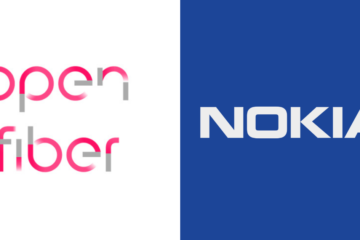
Competitive forces and Multiple perspectives enforce evolutions leading to innovations. 5G won’t be an exception to that as well. There is no reason for 5G service providers to wait for future challenges, whether developing 5G radio access networks (RAN) or designing the next generation of mobile services, i.e., virtual reality gaming or autonomous vehicles. Hence, the telecommunications industry is “opening up” the conventionally closed RAN world. Virtualization and containers have brought a modern world of innovation to the mobile core network. Now that innovation is spreading to the network edge and Open RAN.
What is Open RAN?
Open radio access network (ORAN) is a modern wireless network architecture that enables more fantastic choice, flexibility, and agility for service providers deploying 5G. To understand open ran, we must look at how other networks are built. A typical closed RAN uses proprietary interfaces between the radio and baseband units. This means a service provider is locked into that particular radio and baseband unit vendor, unable to mix and match vendor components for an optimal solution. An open RAN architecture opens up these interfaces, giving operators faster, more flexible deployment options while enabling new functionalities like network automation, analytics, and network slicing. And because they allow multi-vendor deployments, open interfaces contribute to a more competitive and vibrant supplier ecosystem suitable for everyone. Open RAN— Freedom to innovate. Freedom to choose. Faster to market.
Open RAN is not a modern technology but a concept that leverages recent developments that allow for the disarticulation of hardware and software components into smaller parts. In addition, virtualization and AI enable RAN functions to be performed in the cloud. Advocates of Open RAN promise lower costs and new suppliers coming into the unattractive RAN market, which massive R&D costs and low-profit margins have plagued.
Conventionally, telcos used to have a hardware-driven approach of adding an extra layer to the network every time a new technology emerged. This approach required telcos to invest considerably every few years to alleviate their networks. However, with time, telcos have started perceiving the limitations of this approach. Firstly, it is money intensive. Additionally, it requires telcos to depend on a few vendors for their network infrastructure and equipment with little scope for endorsement to innovative and more cost-effective ways of deploying and managing networks.
Why Open RAN?
Open RAN has emerged as not only a technology but a “technology of choice” for operators. Unlike traditional RAN, Open RAN disjoints hardware and software; this gives operators more flexibility to deploy and boost their network architecture.
Dissenting the hardware and software functions brings condensation to market, as it is quicker to set up open networks than traditional ones. Further, the technology is cost-efficient as it reduces operators’ reliance on absolute vendors and reduces the expenditure incurred on infrastructure.
Open Networks can help bring diversity and strengthen the supply chain by bringing in more competition and innovation. Operators can pay more attention to building and operating a RAN based on amalgamating components from different vendors.

Additionally, this technology includes developing future-proof networks so that operators do not have to replace their infrastructure but have a simple software upgrade. In addition, open RAN provides briskness and scalability across all network components, allowing operators to deliver higher throughput without any coverage or capacity restrictions.
Network capacity augmentation and optimization are also enhanced by simplifying nodes and using new automated methods and artificial intelligence (AI) algorithms. Another core reason behind choosing open RAN is its role in facilitating 5G networks. A report remarks that 5G deployment costs are expected to have descended by 30 percent between 2019 and 2022 if a network is built conventionally and 50 percent if an open architecture is used.
Benefits Of Open RAN:
Moreover, open RAN enables operators to increase their network infrastructure partners, better delivery, and more cost-effective 5G network service. By adopting open infrastructure, which comprises open-source software, non-proprietary hardware, and multi-vendor collaboration, telecom operators can build a fully virtualized infrastructure capable of delivering critical 5G-based services. Open RAN can thus help operators reduce deployment costs, improve interactiveness between vendors, and bring intelligent computing to the network’s edge, thereby facilitating performance and unlocking new 5G capabilities.
Understanding the crucial role that Open RAN can play in building future-ready networks, the operator community, vendors, and other stakeholders are proactively engaged in forming collaborative alliances to help drive the uptake of the technology. One of these alliances is the OpenVPN Project Group, created by the Telecom Infra Project (TIP), which focuses on developing vendor-neutral hardware and software-defined technology based on open interfaces and community-developed standards. Another such group is the O-RAN Alliance, founded by telecom operators to clearly define requirements and help build a supply chain ecosystem to realize the twin objectives of openness and intelligence. Members of the O-RAN Alliance include AT&T, Deutsche Telekom, Intel, Verizon, and SK Telecom.
Open interface requirements suggest that 1/3-birthday party products can communicate with the primary ran dealer’s infrastructure. Network operators can then choose the less-costly 1/3 celebration product that runs on commonplace hardware.
As network operators transition to a vRAN architecture for 5g, O-RAN interfaces can reduce the fee of deploying the new 5g era. At the same time, 5g generation advances and modifications, community directors running with open popular-primarily based vRANs can easily send updates to the network infrastructure to deal with the changes.
The O-RAN Alliance is an open ran standards frame specializing in artificial intelligence (AI) and gadget gaining knowledge of its requirements. Even as this isn’t explicitly part of the interfaces connecting supplier products, standardizing how AI can paintings within an open ran structure can convey automation benefits. Computerized deployments shop money and time due to the fact putting in place the networking software program requires much less human involvement.
AI is a significant part of automation and keeping the network. AI brings automation to operational community functions, reduces human intervention, responds to site visitors’ problems, and adapts to converting eventualities. Open Ran allows operators with complete visibility and management of their network’s give up-to-give up safety. Open Ran interfaces, described within the O-Ran technical specs, offer extended unbiased visibility and the opportunity for a common, more suitable, and more excellent secure device. Seeing that the O-Ran alliance builds on 3gpp’s 5g nr architecture, it benefits from 3gpp’s advanced protection functions introduced for 5g.









